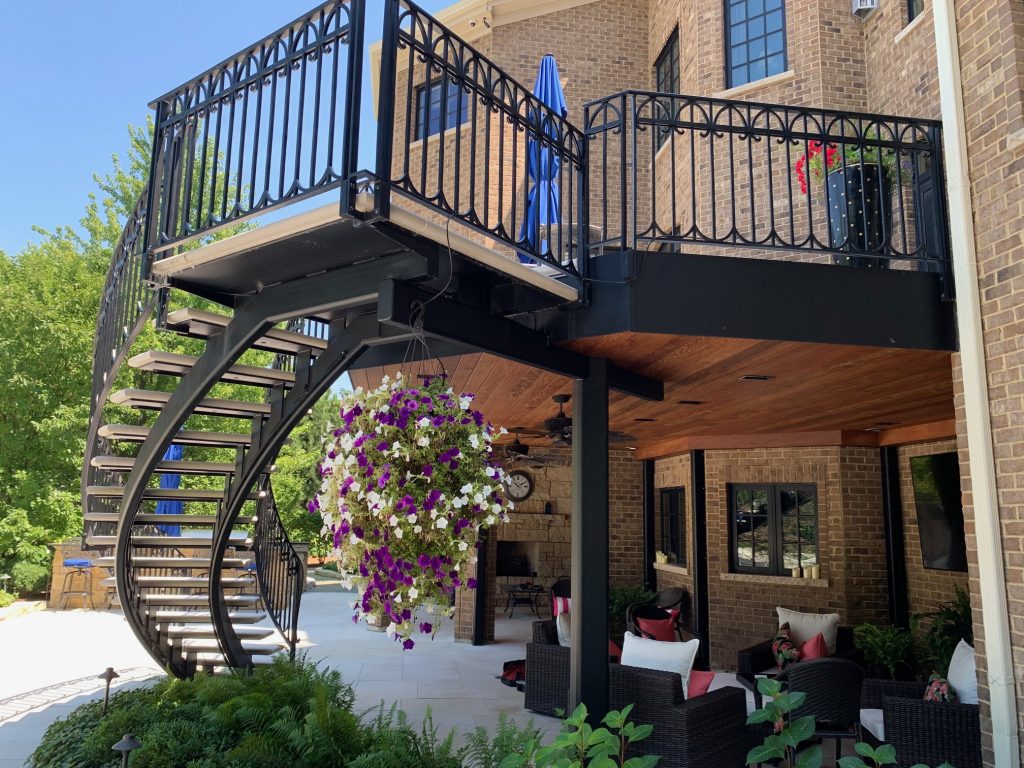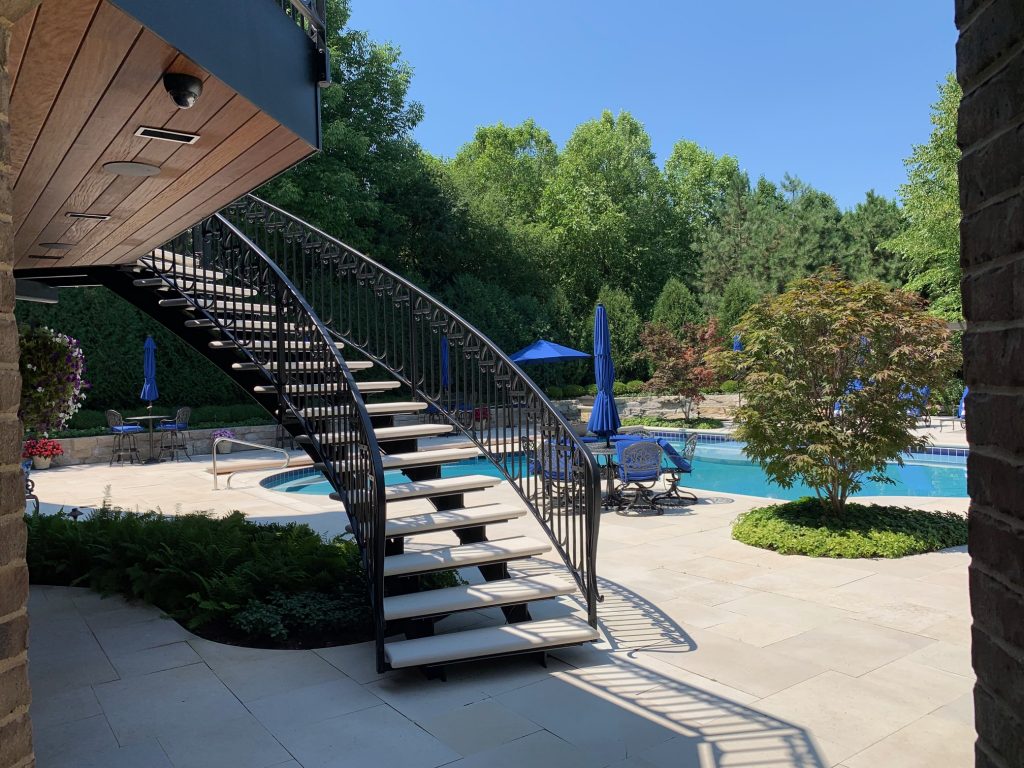Modern fabricators find themselves regularly needing to meet the demands of clients requesting custom fabrication work for both projects in the office and at home. One area that sees increased design customization is in the production of helically curved staircases with curved steel stair stringers. In the corporate environment, many offices seek to add prominent focal points to impress visitors. Installing a grand central staircase in a floor plan creates an elegant point of interest that also adds functional utility. Likewise, a curved spiral staircase can add a unique design element in a home that can increase the homeowner satisfaction with their residence and set their living area apart from their neighbors.


There are several challenges that can come up in the design and construction of these helically curved staircases including the curved steel stair stringers. First, a designer must have accurate measurements prior to crafting the stair assembly drawings. Floor to floor height will affect the rise per tread, while the overall width of the available stair space and the degree of rotation from one level to the next will affect the curved steel stair stringer radius and pitch. Properly calculating these dimensions is critical to ensure the helically rolled pieces will match as close as possible when the fabricator goes to assemble the stringers with the treads.
Another challenge comes with aligning customer design requests with what is structurally possible to be produced. There are limitations to the capabilities for helical rolling of structural steel sections, particularly for architecturally exposed stringers. Solid plate stringers are perhaps the most versatile when it comes to rolling the components on a helical layout. These are easier to match to helical pitch and radius and can thus be rolled to tighter radial dimensions that other stringers. Helical channel stringers are a little more complicated and may see some more flange distortion or bowing as they are rolled to subsequently tighter radial measurements. Tube sections would be the most difficult to roll to tighter radial dimensions without encountering larger deformation. Unlike flat or level rolling which can use a stationary removable mandrel to brace the hollow interior during the rolling process, helical rolling does not allow for the same mandrel support. Without mandrel support, the exterior pressure on the hollow tube cross-section from the machine tooling will attempt to flatten the piece. The larger the gap space between the walls of the tube, the greater the deformation is likely to be. One method to counter some of this flattening pressure is to increase the hollow section support internally with additional steel crossbeams. These serve to provide a similar function as a removable mandrel but act as permanent support like crossbars in a truss. These steel supports may enable a tighter radius to be acquired on the helical curved steel stair stringer, but there is a trade-off in added weight to the stringers. Ultimately though, a point can be reached where the radius is too tight to roll an HSS tube section even with interior steel bracing without suffering excessive cross-section deformation and other substitutions may be required.
In the end, reaching out to an experienced fabricator of helical stair stringers early in the design phase can have lasting advantages. Contact us for collaboration on your next project! Early discussion of the limitations and capabilities with helical rolling can assist designers and fabricators alike by providing a better quality product for their clients as well as making the helical stair stringer assembly and installation phase run more smoothly.
View our photo gallery of completed helically curved staircases and curved steel stair stringers.







